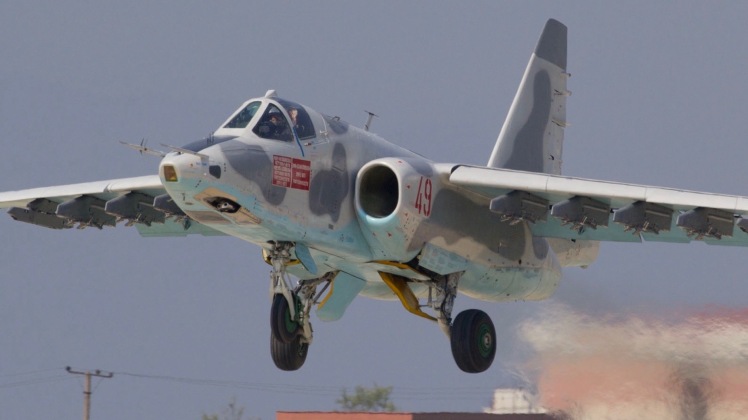News
North Korean Su-25 Attack Jets Train to Give Ground Troops Rocket Support in New Footage

Marking the 90th anniversary of the foundation of the Korean People’s Army (KPA), North Korean state media released a range of footage showing live fire testing of various weapons systems which notably included training on Su-25 attack jets that serve under the KPA Air Force. An aircraft was seen firing salvos of short range rockets at a target range on an island off the Korean coast, and marks one of relatively few appearances of this aircraft class in Korean media. Aside from MiG-29 fourth generation fighters assembled in the country under license, the Su-25 is one of the last combat aircraft North Korea is thought to have received with an estimated 34 delivered by the Soviet Union shortly before the superpower’s collapse. The KPA had at the time not seen deliveries of modern Soviet jets for some years, which changed only after relations began to improve in the mid 1980s. The aircraft were purchased alongside MiG-23ML and MiG-29 fighters, Tin Shield radar systems and S-200 and S-125 surface to air missile systems among a range of other assets. This was part of an effort to significantly improve the KPA’s aerial warfare capabilities, which was cut short by the Soviet collapse in 1991 and economic crisis in North Korea which followed from 1994.
The Su-25 is the last class of manned close air support jet to have been produced anywhere in the world, and has seen widespread combat operations across three continents most recently supporting Russian counterinsurgency efforts in Syria and in the Russian-Ukrainian conflict that began in February 2022. Known as the ‘flying tank,’ the aircraft provides an analogue to the older American A-10 Warthog and the Chinese Q-5, and is heavily armoured to be able to withstand fire from both surface to air missiles and anti air artillery and operate at low altitudes in support of ground units. It is particularly prized for its durability and its low operational costs, although as attack drones have increasingly taken over close air support roles and proven cheaper and more expendable the continued relevance of the Su-25 and A-10 has been brought to question. North Korea notably also deploys older fighter classes in larger numbers, namely MiG-19s, for close air support due to their obsolescence for other roles and heavy firepower at close ranges.
In North Korean service the Su-25 is fielded in relatively small numbers, and with the Air Force considered the weakest branch of the KPA as the only area where older equipment cannot be replaced by the domestic defence industry ground force training and doctrine are not likely to anticipate an abundance of close air support. North Korea has nevertheless developed alternative assets to lay down fire support, including ‘tank killer’ vehicles, a new generation of battle tanks, and some of the world’s longest ranged rocket artillery systems, which not only can lay down more firepower but are also likely to be more survivable than a small number of Su-25 jets.












